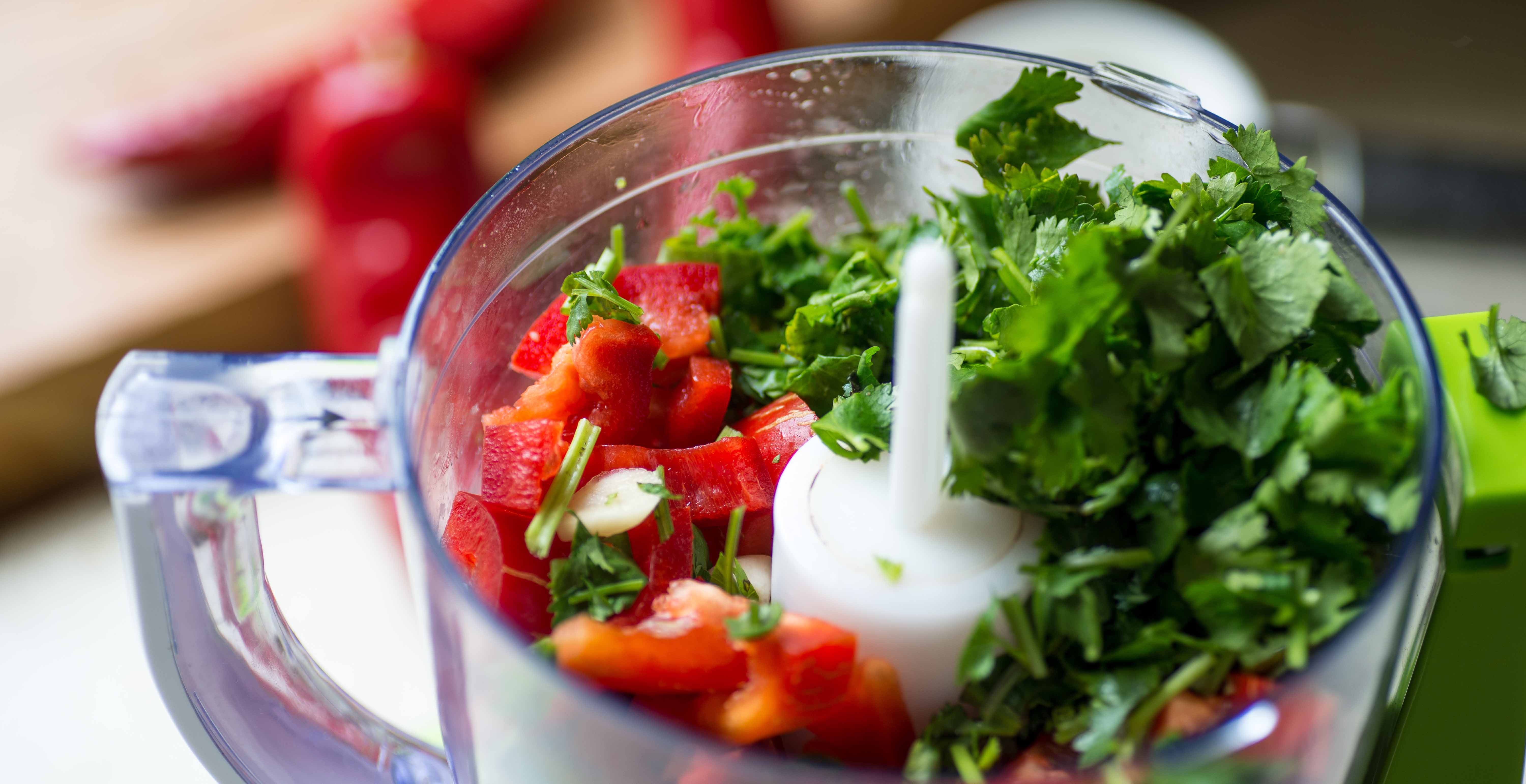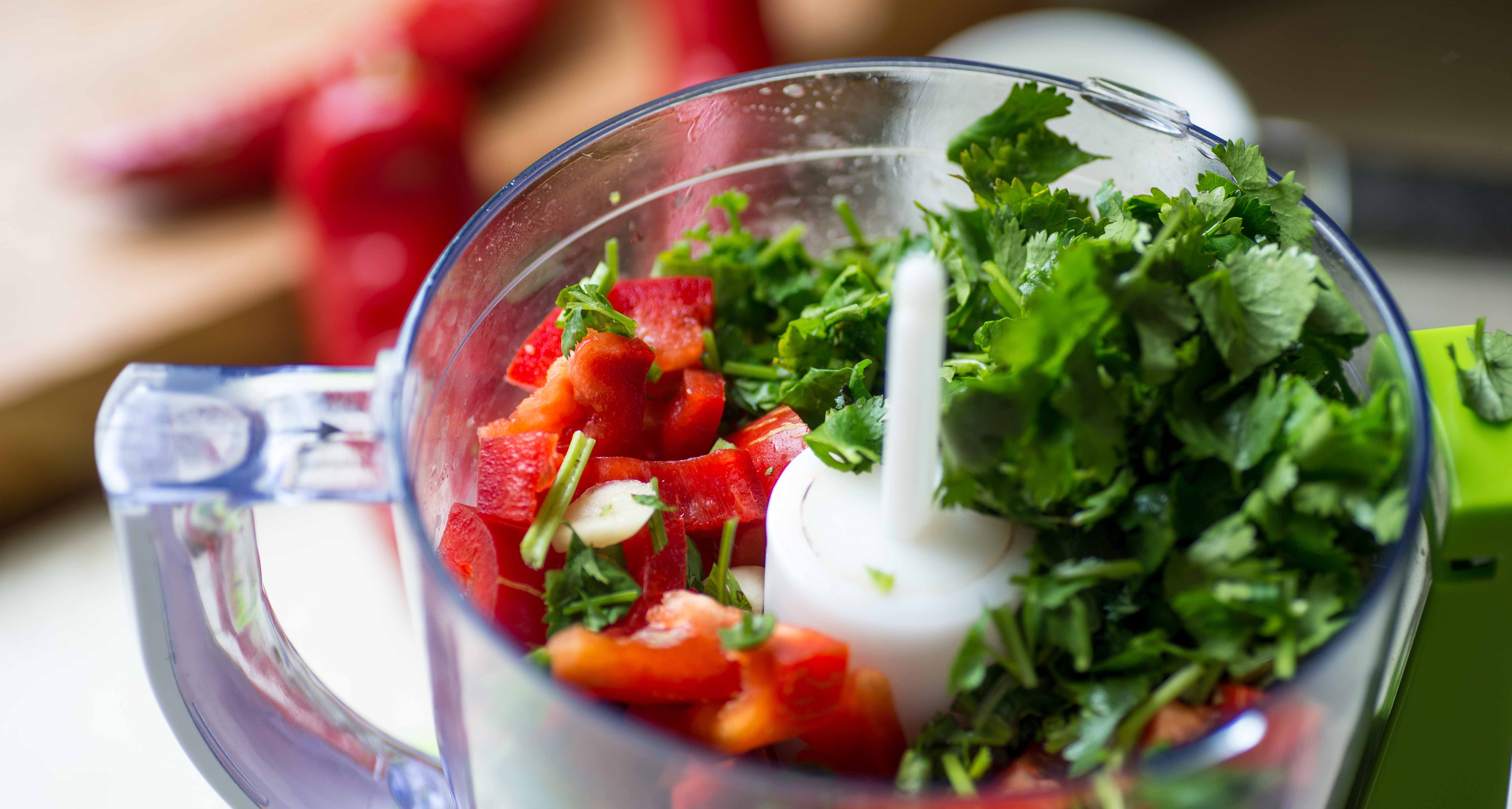Finding the Perfect Food Processor


Are you on the lookout for a piece of kitchen equipment that can do it all? From chopping to shredding, food processors are one of the most versatile appliances around and they can (almost) do it all. When it comes to picking out the best food processor for your kitchen, it’s important to think about how you plan on using it. For example, will you be doing a lot of bulk prep cooking? Or will you be using it to make frozen yogurt? This article will help you narrow down your choices so that you can find the perfect food processor for your home and meal-planning needs.
What does a food processor do?
A food processor uses interchangeable spinning blades and attachments to perform repetitive tasks such as shredding, grinding, puréeing, mixing, chopping, slicing, and kneading. Unlike a blender, there’s no need to add extra liquid when puréeing dry ingredients. Food processors also have feed tubes built into their lids (and an accompanying pusher) for shredding, slicing, and chopping ingredients or for adding ingredients as they’re being puréed. Food processors can also be used for kneading, giving you a good excuse to make homemade pizza dough and bread more often. If you only plan on using your food processor for small chopping jobs, consider purchasing a mini-chopper instead (the impact on kitchen real estate is much lower and so is the cost).
What to look for in a food processor
Capacity
Food processors typically have a capacity range of 7-16 cups, although some restaurant-grade models have a capacity of 16 cups and upwards. Food processors with capacities in the low to middle range are generally suitable for home cooks.
Features
Depending on the model, food processors will have a number of different features which you may or may not find useful. All food processors have an important safety feature that prevents the machine from turning on until the processor bowl, blade and lid are locked into place. Some food processors have multiple speeds and settings which can be changed using the buttons on the front of the machine. Whenever possible, look for food processors that have flat plastic buttons. These prevent food from being stuck underneath the buttons and make cleanup (using warm soapy water) that much easier.
Cost
Food processors have a wide range in terms of cost, some machines can run as low as $50 and other high-end models can be several hundred dollars. Inexpensive food processors can often have issues with being very loud and with their motors rapidly overheating, so it’s important to read reviews before making a decision (Consumer Reports and the Good Housekeeping Institute are great places to start).
What else can you do with a food processor?
Make memorable hummus
Food processors are the best tool for the job when it comes to making hummus. While it can take several starts and stops to make hummus in the blender, a food processor can turn chickpeas and tahini into super-creamy hummus in a matter of minutes.
Turn bananas into nice-cream
Freeze cut-up pieces of overripe banana and use them to make a naturally sweet and satisfying banana-based ice cream. Cut the bananas into small pieces and freeze in a single layer for best results.
Make homemade nut butter
A food processor with a sturdy motor and a cup or two of nuts are all you need to make nut butter at home. Don’t be surprised if it takes several minutes for the nuts to turn into butter, you can speed up the process by using a silicon spatula to scrape down the sides every 30 seconds. Add honey or cinnamon as desired.
Turn stale bread into breadcrumbs
Homemade breadcrumbs are superior to store-bought in almost every sense of the word and a food processor makes quick work of the job. Use leftover stale bread or tear fresh bread into pieces and toast in a low oven, add to the food processor and blitz until the breadcrumbs are uniform in size.
